Defining persistent extents
Since persistent extents are the entry point for accessing data, most data types define at least one extent. Typically, an extent with the same name as the data type is created when defining a data type (see Data Type Wizard)
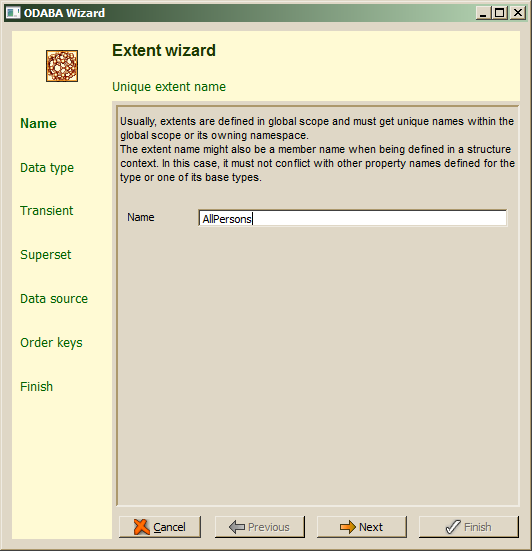
Extent names have to be unique within the resource database (dictionary) or the (next higher) active name space. Extent names are technical names and must not contain special characters or spaces except underscores. After filling in the extent name, Next should be pressed in order to continue. When the extent name is not correct or does already exist, an error will be displayed in the wizard's message area.
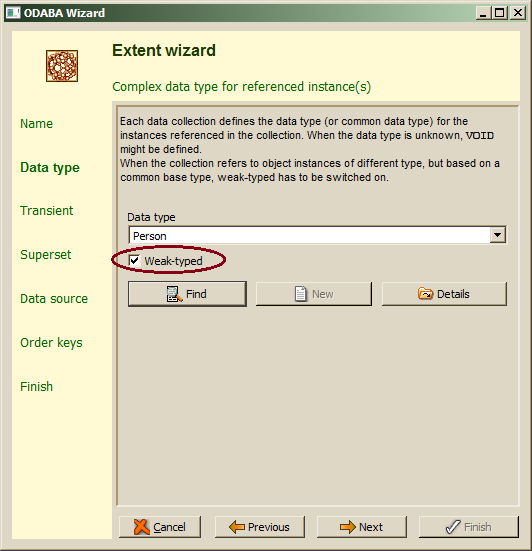
For selecting a complex (user-defined) data type, one may enter the type name directly in the Data type field or use enhanced find by pressing the Find button, which allows selecting a data type defined in the project or a system data type. When the data type entered does not yet exist, one may enter the new data type name in the field and press the New button. In this case, a sub wizard for defining new data type pops up (see Data Type Wizard). For viewing the type definition for the selected type, the Details button might be used.
When instances with different data types are to be stored in the extent (collection), all referenced instances must inherit from the data type defined in the Data type field and Weak-typed has to be enabled. In order to store instances of any type in the collection, VOID has to be defined as data type and Weak-typed must be switched on.
The Next step allows choosing an appropriate collection type.
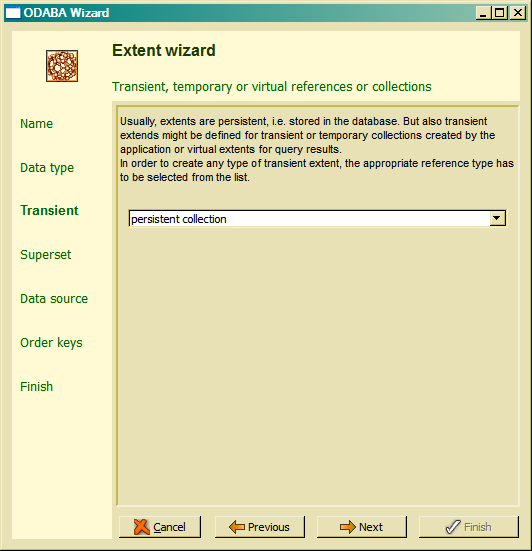
For defining a persistent extent (collection), the reference type persistent collection has to be selected. The Next step allows selecting a superset or base collection for the extent.
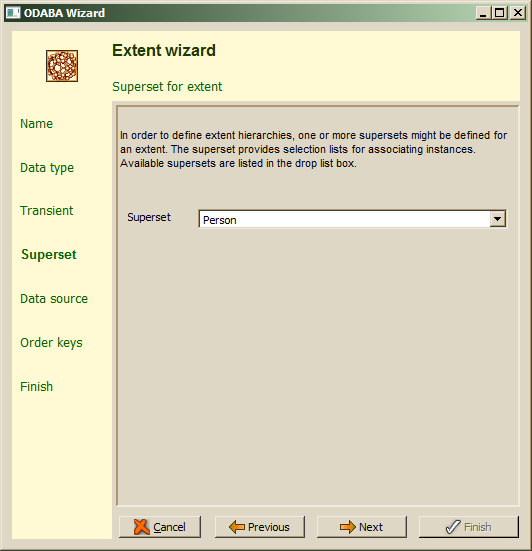
When more than one extent have been defined for the data type, the drop list provides all available extents for the selected data type. When not defining a superset for the extent, the extent is considered to be an owning extent and referenced instances are deleted when they are removed from the extent collection. In order not to define a superset.the Superset field has to be cleared. before continuing with Next.
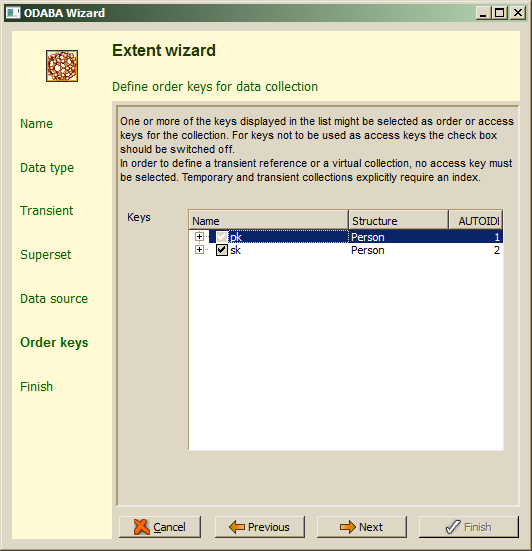
Key definitions for the data type of the extent are listed as access key (sort order) candidates. By default, the primary key is selected to be used as access key. One should select only those keys, which are really needed for ordering the extent collection. Extents must contain at least one access key.
The Next step shows the summary for the extent definition.
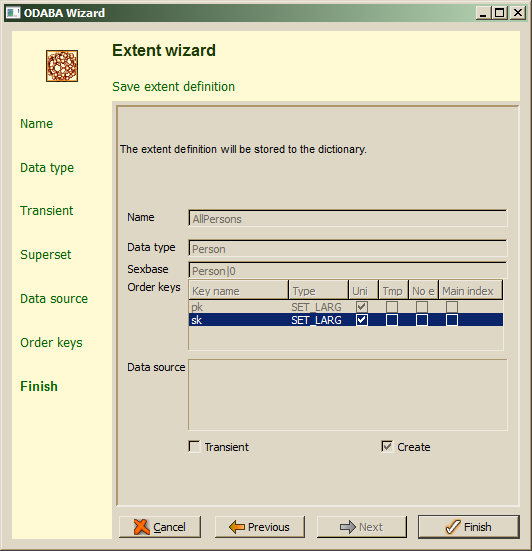
After confirming the wizard action with Finish, the extent definition stored to the resource database.

